![]()
Edmonton Oilers fans have suffered through 11 out of the previous 12 seasons with their team out of the playoffs. The worst part about the now-done tenure of Peter Chiarelli is that he took over an Oilers roster with hope and scoring depth in need of some significant tweaking and left the team with very little flexibility, no scoring depth and still in need of major change.
My summary of Chiarelli’s regime reviewed the dire roster outlook left by the previous general manager. We could spend weeks dissecting in detail the horror of many of his transactions, especially the most recent, and stories have begun to leak from his time with the Oilers. At this point, however, with the die cast already, it’s time to look ahead to see how the next general manager will be able to right the ship.
Many in the media have pursued the pessimistic storyline, with TSN’s Darren Dreger saying the roster fix is “not going to be easy” and Terry Jones of the Edmonton Sun noting that “finding hope isn’t easy” (from ‘Peter Chiarelli leaves huge mess for Edmonton Oilers to clean up’ – Edmonton Sun – 1/24/19).
Three weeks before Chiarelli’s firing, however, Jonathan Willis of The Athletic argued that the Oilers could get competitive in a hurry with one good offseason. Below, I will take a different approach to argue that possibility.
It's going to mean throwing away (and preferably burning) the Chiarelli playbook, but the #Oilers can get back on track with one good summer: https://t.co/qMRq4QOmEY
— Jonathan Willis (@JonathanWillis) January 3, 2019
Oilers Current Roster for 2019-20
Let’s start by looking at next season’s roster as it is currently constructed. I used a salary cap of $83 million as projected by the NHL for next season. The rosters were generated using CapFriendly’s Armchair-GM Tool. The image below should perhaps come with a warning – those easily frightened might want to look away.

Note that this roster only includes players signed for next season, and doesn’t yet include restricted free agents (RFAs) such as Jesse Puljujarvi and Jujhar Khaira who are likely to be retained and contribute at some level to the Oilers moving forward.
The biggest takeaway from the current alignment is that the Oilers are already spending just under $12 million on just four wingers, none who can be counted on at this time for any meaningful production. At best, the Oilers could expect Milan Lucic, Ryan Spooner, Zack Kassian and Kailer Yamamoto to be their third and fourth line wingers for the 2019-20 season.
Moving Leon Draisaitl or Ryan Nugent-Hopkins to the wing has been the ongoing solution to this problem. The consequence of this less-than-ideal adjustment has been to further shrink the scoring depth of the roster and create a hole at centre which should otherwise be a position of strength.
The other major issue to be addressed is that, as it currently stands, the team would be relying heavily on Andrej Sekera to be healthy and productive, something we can’t be sure of at this point. Without any changes, the team would need two of Sekera, Darnell Nurse, Kris Russell and Matt Benning to play productive second pairing minutes, a role in which none of them have consistently excelled, even though all have proven capable to varying degree at times.
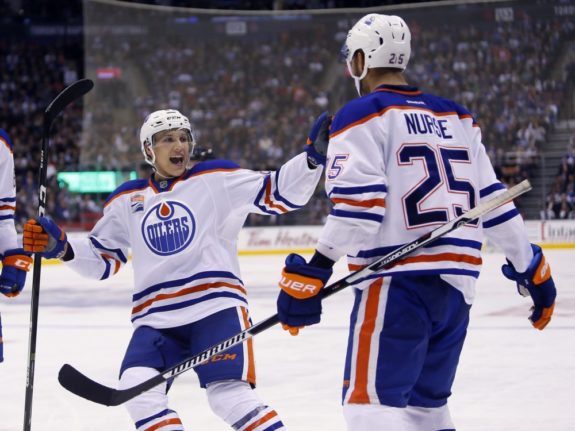
All of these issues are in place while the Oilers sit with less than $11 million in cap space and needing to sign six more players to the roster. The Oilers not only need to add valuable pieces, but also subtract some salary in order to make it possible.
Oilers Areas of Organizational Depth
While the situation described above looks rather bleak, there are some areas of strength the organization can begin to draw on. Most specifically, the Oilers have fantastic depth among defensive prospects.
Their AHL affiliate, the Bakersfield Condors, are currently on a 10-game winning streak driven partially by a trio of defensemen with two-way acumen in Ethan Bear, Caleb Jones and William Lagesson. Both Bear and Jones have over a half-point-per-game this season (Bear for the second straight season) and both have had promising NHL debuts in the last 12 months.
Beyond the farm team, the Oilers creatively procured Swedish defenseman Joel Persson by signing him last summer with the plan to leave him in the Swedish Elite League for the time being. He is having another excellent offensive season and plans to come to North America in 2019-20.
Finally, the team’s first-round pick from the 2018 Draft was Evan Bouchard. Bouchard is tabbed as the future of the Oilers’ top pair and top power-play unit, and while he may not be ready by next season, he is an elite level prospect the team is counting on down the road.
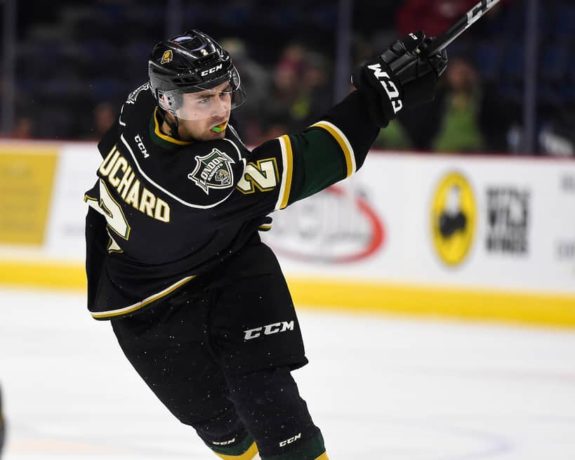
The prospect pool has its greatest strength on defense, but has improved significantly in all areas. The Condors are seeing significant production from Tyler Benson, who leads all AHL rookies in assists, as well Cooper Marody and Joseph Gambardella, who were both AHL all-stars this season. Kirill Maksimov has also been improving steadily since he was drafted in the fifth round in 2017.
Additionally, the organization has some promising goaltending prospects, with Shane Starrett channeling some of his success from college hockey and Stuart Skinner well regarded as he makes his professional debut.
While the Oilers can’t rely on all, or even many of these players to end up as NHL talents, they can utilize some of their organizational depth in trades to better position the NHL roster while placing a premium on development that has eluded the team recently but seems to be somewhat improved this season.
Who and How Should the Oilers Delete From Their Team?
The first player on the roster the new general manager should look at with extreme prejudice is Brandon Manning. Perhaps I am overstating the extent to which acquiring him, regardless of cost or ability, was a mishap, but I can’t imagine he is truly welcome in the Oilers locker room after intentionally injuring Connor McDavid a few seasons ago.
Even if we believe that there is no conflict whatsoever, Manning rates worst or second-worst among Oilers defensemen measured by the percentage of shots and goals the Oilers get with Manning on the ice compared to their opponent. There is next to no chance the Oilers find a taker for Manning and his $2.25 million salary without taking some salary back, so for the sake of simplicity, they can send him to the minors – preferably on a loan to a different organization’s minor league team.
He could be replaced on the roster by a seventh defenseman such as Kevin Gravel, who by the same metrics is a perfectly capable NHL player and would likely cost very close to this season’s $700,000. A tough competition at training camp could also see any of Jones, Bear, Bouchard or Persson win a spot on the team, but all are likely best served by at least starting the 2019-20 season in the AHL.
Moving Manning out is an important step but it doesn’t open any significant cap savings. The players easily identifiable as the biggest drags on the salary structure for the Oilers are Lucic, Sekera, Russell and Spooner.
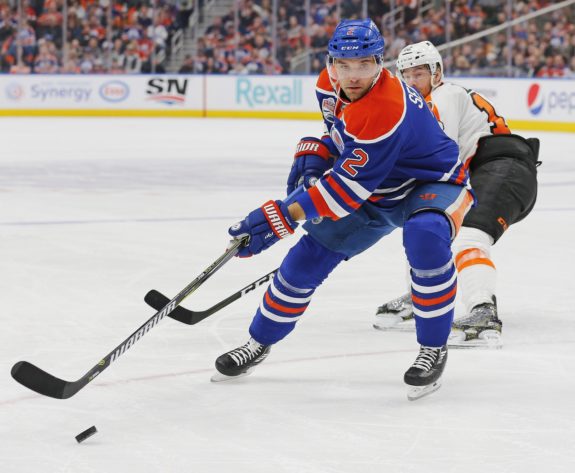
Sekera is not a great candidate to be moved. Despite news in December that he was nearing a return, he has just begun conditioning in the minor leagues. It is unclear when he will return and, after more than 18 months of battling injuries, if he can ever regain his form as the top-four defenseman the Oilers signed him to be.
The Oilers’ best bet is to hang on to Sekera for now, hoping he can play at least decent third pairing minutes next season, while constructing a roster with enough cover in case he can’t. The four prospects I mentioned above that will be bubbling under in the AHL should provide that cover. If it turns out Sekera doesn’t return to full health, he could be placed on long-term injured reserve and the Oilers would have some extra spending money.
It is also unlikely that the Oilers find a useful way to move on from Spooner. His contract runs out at the end of the 2019-20 season and they can either ride it out with him finding a useful role as a bottom-six forward, or bury him in the minors and use the savings of $1.075 million on a serviceable fourth-line player. Based on Spooner’s play so far with the Oilers, the latter is most likely.
The Oilers should hang on to Russell for an altogether different reason; he provides the team with value. While many criticize both his play and his contract, particularly those using possession analytics to support their argument, he is an NHL veteran who can be counted to play respectable minutes. The Oilers are in no position to scoff at that, nor can we expect the roster to be perfected in one summer.
In his three seasons with the Oilers, the team has scored the same amount of goals as they have allowed when Russell is on the ice at five-on-five. This season he is also sitting at a 50 percent five-on-five goal share, including 13 goals for and 16 against (44.8 percent) when McDavid is off the ice, compared to the team’s rate of 37.7 percent with neither of them. Russell is by no means the perfect player, but the roster is not in a place to move on without him.
The Oilers Must – and Can – Trade Lucic
The other reason not to spend any capital moving on from Sekera or Spooner is because the Oilers will need to add significant value alongside Lucic in order to trade him elsewhere. That is, however, the route the team must go.
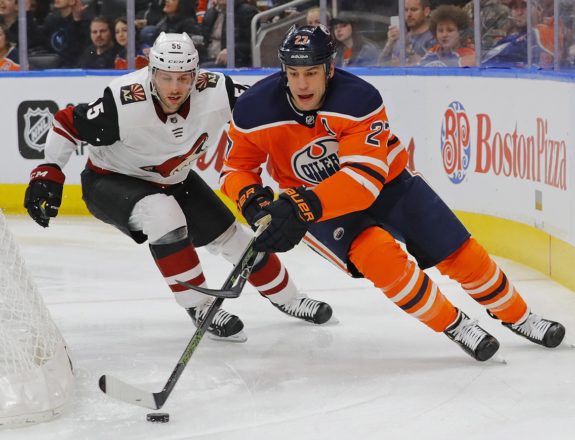
Lucic has been unproductive for nearly his entire time on the Oilers, with an unsustainable run on the power play in his first season the only positive blip. He is highly physical and is among the league leaders in hits, but in producing just six goals and 22 points since the start of Jan. 2018, he is overpaid by at least $4-5 million. His contract is also structured in a way that makes no sense for the Oilers to buy him out.
The first hurdle to moving Lucic is that Chiarelli gifted him with a full no-movement clause. He cannot be sent to the minors or traded without his consent. However, there has been plenty of speculation that Lucic would be willing and perhaps interested in being moved to another team. The harder part, of course, will be finding a team willing to take him in a trade that benefits the Oilers.

As unlikely as that seems, the NHL has a decent history of the type of trade the Oilers would be looking to make:
- In June 2014, the Tampa Bay Lightning traded Teddy Purcell to the Oilers for Sam Gagner and then flipped Gagner to the Arizona Coyotes along with B.J. Crombeen for a sixth-round pick. The series of moves netted the Lightning about $4 million in cap space.
- In Feb. 2015, the Toronto Maple Leafs traded five seasons of David Clarkson at $5.25 million to the Columbus Blue Jackets for Nathan Horton. It was nearly guaranteed Horton would not play again, but his contract was uninsured, so the Maple Leafs would have to pay the actual cost of the contract, but would not have the contract calculated against their salary cap.
- In June 2016, the Chicago Blackhawks traded Bryan Bickell, going into the final season of his $4 million contract, along with Teuvo Teravainen to the Carolina Hurricanes for a second and third-round draft pick.
- In Aug. 2016, the Florida Panthers traded Dave Bolland and his remaining three seasons at $5.5 million along with recent 11th-overall pick Lawson Crouse to the Coyotes for two third-round draft picks.
The above examples show that this type of ‘salary dump’ is possible. Only the Blackhawks would have serious remorse at this time, with Teravainen turning into a bona fide top line forward for the Hurricanes. In the other three circumstances, these trades created the desired cap space without significant concession.
If the Oilers are able to trade for an injured player, they may be able to clear all the cap hit from Lucic’s contract. For example, Marian Hossa is being counted against the cap for the Coyotes, even though he is eligible for cap relief on long-term injured reserve. The Coyotes could be an excellent target as they could afford Lucic under the cap and may rather have a live player than an empty cost.
Lucic’s contract is also somewhat trade friendly for a team like the Coyotes; his cap hit is $6 million per season but his actual salary to be paid for the remaining four seasons is $16 million total for any team acquiring him after July 1, 2019.
The Oilers could also dig into their organizational depth and move a defense prospect, such as Jones, Bear, Lagesson, Dmitri Samorukov or Phil Kemp along with one or two mid-round draft picks in order to entice a team to take on Lucic, following the template of the third and fourth trades above. The sacrifice of a future middle or end of the roster piece is worth the cap space to add a significant contributor in place of Lucic.
There is no point trying to predict the exact trade that could be made, but there is precedent for what the Oilers need to do. To entice a team to finalize such a deal, the Oilers may have to retain some of Lucic’s salary. Let’s assume the net result of the trade sees the Oilers retain 25 percent, or $1.5 million per season. This will make his cap hit a little more palatable for his new team and reduce the actual dollars paid to a nearly fair amount.
Who Can the Oilers Add This Offseason?
With the proposed trade concept outlined above, as well as sending Colby Cave to the minors and replacing Spooner on the roster with Benson, who is earning that promotion with his play in the AHL, the proposed Oilers roster sits with 14/23 players and about $17.4 million in cap space.
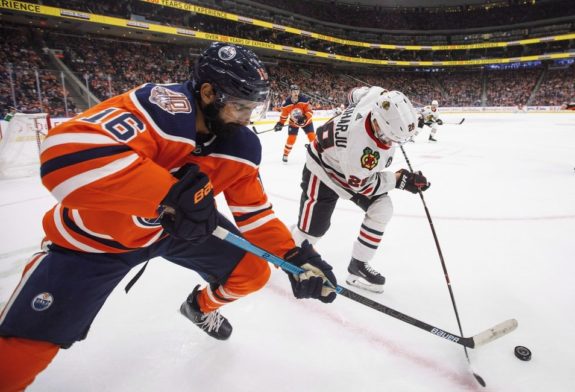
In order to make it clear what big additions the Oilers can afford, it is easiest to fill in the other gaps first. To help predict the cost of the Oilers two major RFAs, I’ll reference Matt Cane’s excellent work in forecasting player salaries. His first draft of 2019 free agent predictions is not out yet, but his work from 2018 is still able to inform the future.
Here we go! Final (assuming I don't find any errors) contract predictions for the 2018 Free Agent Class:https://t.co/CwF6kTUfdZ
— Matt Cane (@Cane_Matt) May 21, 2018
Loose comparables for Puljujarvi should include former high draft picks coming off their entry-level deals who hadn’t quite lived up to expectations yet. Nick Ritchie of the Anaheim Ducks who signed for three seasons at $1.533 million per season and defenseman Ryan Murray with the Blue Jackets who signed for one season at $2.825 million stood out from last summer. It is fair to say that Ritchie is a far better comparable, since he is a forward and has similar draft pedigree and slightly better scoring numbers than Puljujarvi so far, though he is older.
If the Oilers are betting on Puljujarvi, they may try to lock him up for three seasons as well, and I will generously project $2 million per season.
To establish a reasonable prediction for Khaira, consider the contracts for Blake Coleman with the New Jersey Devils and Matt Nieto with the Colorado Avalanche. They aren’t perfectly comparable but both had similar production to Khaira last season and came with similar draft pedigree (late second, early third round picks). Coleman is now making $1.8 million (for three seasons) and Nieto $1.975 million (for two).
Since Khaira, like Coleman, is having his first truly impactful season in the NHL, compared to a longer run of success from Nieto, on a short-term deal Khaira shouldn’t require more than about $1.85 million.
The Oilers will need a seventh defenseman, who I mentioned earlier could be Gravel. They will also need a backup goalie of some significance who can support, push and, if needed, supplant Mikko Koskinen. Based on the goalie market from last offseason, and the available goalies this summer, the Oilers should strongly consider Curtis McElhinney, who has been quite consistent throughout his career and never made over $1 million.
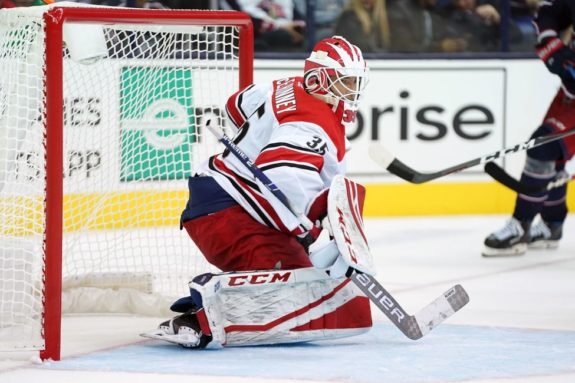
With some problematic contracts still in place, the Oilers will need some contributions from their developing prospects or inexpensive additions in order to succeed. Cooper Marody has done enough to push for NHL employment next season on a secondary scoring line. Moreover, the end of the roster can be filled with Tobias Rieder at a salary reduction based on his unproductive season, as well as Ty Rattie and Gambardella with no salary increase. These names could, and likely will be interchanged with external options, but work well for the sake of simplicity.
The Oilers Could Make Two Big Additions
All this work would have the Oilers in a better salary cap situation but looking a lot like the team barely clinging to life this season. The payoff, however, comes from making the correct bets with the cap space created. With all the moves described above, the fictional 2019-20 Oilers are sitting at 22/23 players and just over $8.3 million in cap space.
At this point, each reader could pick his own favourite player or two and figure out how to add them onto the Oilers roster. Going hunting for the market’s biggest fish is a bet the Oilers lost when signing Lucic in the summer of 2016, but I see an ideal fit for the Oilers this offseason.
Along with Artemi Panarin and Matt Duchene, Mark Stone, just 26 years old, is the class of the unrestricted free agent forward group this summer, and the youngest of the three. Stone, a speedy winger with fantastic scoring and playmaking ability, seems like an ideal fit on McDavid’s wing. If the Oilers could sell him on the opportunity to play with the world’s best player for the next half decade or more, they might be able to get him on long-term deal at $8 million per season.
There are lesser backup plans like Anders Lee, Mats Zuccarello, Wayne Simmonds and even Jordan Eberle, but if the Oilers can clear the cap space necessary, there may be a unique opportunity to add a young-enough superstar in unrestricted free agency.
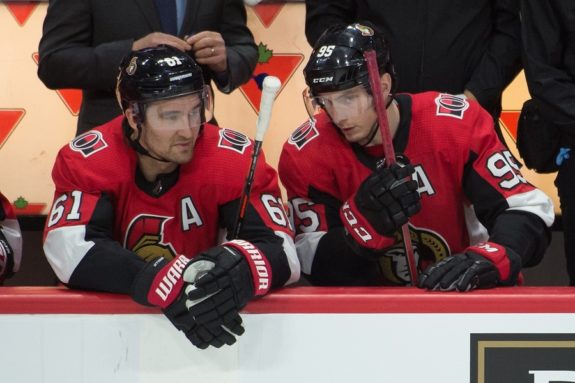
There is one more step to this productive Oilers offseason, which involves upgrading the defense. With four seasons of McDavid’s career gone and not enough team success to show for it, the theoretical addition of Stone should serve as a demarcation between the early and the competitive part of this Oilers era.
As long as they aren’t in the top-five or so, the 2019 or 2020 first-round picks, if they can sell a team on them, should be in play. In searching for a right-shot, offensive defenseman under team control for the foreseeable future and an affordable contract, I found Brandon Montour as the ideal way for the Oilers to complete their offseason transformation.
The Ducks are looking like a team primed to descend into a complete rebuild. While they could certainly project Montour as a part of their long-term solution, he is already 24 and may not fit the timeline, with a chance to reach unrestricted free agency before the team would be ready to compete again. Montour has also consistently appeared in trade rumours, suggesting there is a least some level of willingness from the team to move on.
The Oilers just might be able to sell the Ducks on that thought process, especially if they offer their 2019 first-round pick. Along with Benning and Kassian, who were both at their best when the Ducks and Oilers met in the 2017 Playoffs and who would be required to match the salaries going in and out, the Oilers should have enough to get this trade done. The Oilers could also include a mid-level prospect from among the defensemen listed earlier in this article.
Oilers Roster for 2019-20 After an Ideal Offseason
At the conclusion of a productive, highly theoretical, but possible, offseason, the Oilers will have a final forward roster spot to be earned at training camp by a younger player or a veteran on a professional tryout, and just under $800,000 to make it happen. The team will be right up against the salary cap, but in a far better position than they sit today.
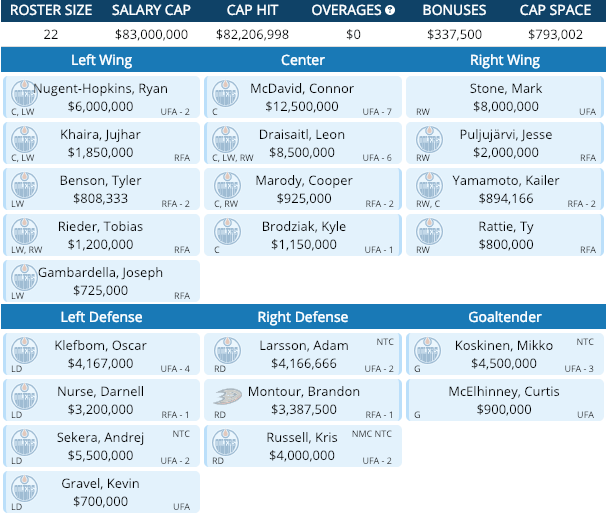
The roster above most certainly has flaws, but it also hints at balance for the first time in recent memory. Each defensive pairing carries a puck mover of considerable ability alongside a more defensive-minded partner. The forward group, while not deep enough to use the three-centre alignment, has the high-end skill to ice two significant scoring lines. Perhaps this won’t be in exact configuration shown above, but any combination of McDavid, Stone, Draisaitl and Nugent-Hopkins matched with two of the remaining wingers should be able to carry the team offensively.
The most glaring potential weakness is in goal, but the Oilers have committed to Koskinen and it won’t be easy to undo that decision. If he falters, though, as many expect, it is entirely reasonable to expect McElhinney to carry the load next season.
The other area of concern would be a third line comprised of rookie forwards, but none are rookie professionals. The group could provide a consistent forecheck and chip in with some secondary scoring, while having their ice-time reduced in favour of the veteran fourth line during tougher games.
Can the Oilers New General Manager Make This Happen?
A major wild card in predicting the Oilers’ next nine months of roster activity is that the person in charge has yet to be named. Even when that happens, the prevailing candidates being discussed would all be first time managers, so predicting their approach will remain difficult.
That said, the template for an impactful offseason is achievable. In fact, I have proposed a measure of patience and roster continuity that allows for significant change with just four external transactions – two signings and two trades. The particular approach chosen may differ, but despite all the mistakes that have piled up, the Oilers have a chance to enter the 2019-20 season with a far better roster after just one good summer.